Space Research and Observations
Lightning Imaging Sensor (LIS) Overview
The Lightning Imaging Sensor (LIS), is a space-based instrument used to detect the distribution and variability of total lightning (cloud-to-cloud, intra-cloud, and cloud-to-ground lightning). It measures the amount, rate, and radiant energy of lightning during both day and night. Two LIS instruments were built in the 1990s, one for the Tropical Rainfall Measurement Mission (TRMM) and a spare which was stored on a shelf for over 20 years. A summary of the two platforms highlights the differences. The TRMM LIS operated successfully for over 17 years, from launch in 1997 until April 2015. The spare LIS was placed in Feb 2017 on the International Space Station (ISS) for a two - four year mission.
LIS Sensor
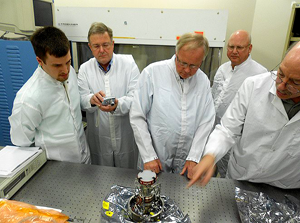 The LIS instrument consists of a collection of instrumentation centered around a staring imager that is optimized to locate and detect lightning at millisecond timing with storm-scale resolution over a large region of the Earth's surface. Resolution of measurement and region of coverage varies depending on the orbit and altitude (whether on TRMM in a semi-equatorial orbit or on the ISS.)
The LIS instrument consists of a collection of instrumentation centered around a staring imager that is optimized to locate and detect lightning at millisecond timing with storm-scale resolution over a large region of the Earth's surface. Resolution of measurement and region of coverage varies depending on the orbit and altitude (whether on TRMM in a semi-equatorial orbit or on the ISS.)
LIS is a calibrated lightning sensor which uses a wide field-of-view expanded optics lens with a narrow-band filter (at 777nm) in conjunction with a high speed charge-coupled device (CCD) detection array. A Real Time Event Processor (RTEP) inside the electronics unit is used to determine when a lightning flash occurs, even in the presence of bright sunlit clouds. Weak lightning signals that occur during the day are hard to detect because of background illumination. The RTEP will remove the background signal, thus enabling the system to detect the weak lightning signal and achieve up to a 90% detection efficiency. The efficiency with which lightning detection occurs varies depending on time of day and the intensity of the lightning. The instrument records the time of occurrence of a lightning flash, measures the radiant energy, and determines the location of flashes within its field-of-view.
The LIS instrument was designed by scientists at The University of Alabama in Huntsville and was manufactured at the Marshall Space Flight Center. The lightning team can be contacted for more information.
Example of Lightning Observations
The image below depicts some lightning activity that was observed by the TRMM Lightning Imaging Sensor (LIS) on its first day of operation (November 30,1997). The thunderstorms that produced this lightning activity were located near the eastern coast of Australia.
An examination of this example image demonstrates that not all clouds produce lightning. Due to the relationship between lightning and updraft velocity, lightning activity can be used to identify locations of strong upward convection.
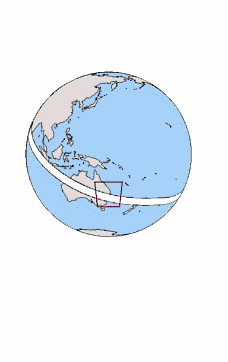 |
 |
||
 |
 |
 |
|
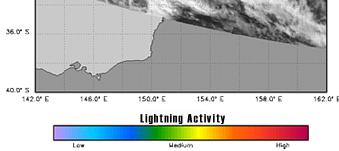 |
|||
Use of LIS data
LIS data are used to study mesoscale phenomena such as storm convection, dynamics, and microphysics. These are related to global rates and amounts and distribution of convective precipitation, as well as to the release and transport of latent heat, which are all influenced by global scale processes. LIS data are vital to our understanding of global lightning and thunderstorm climatology.

 ISS LIS
ISS LIS
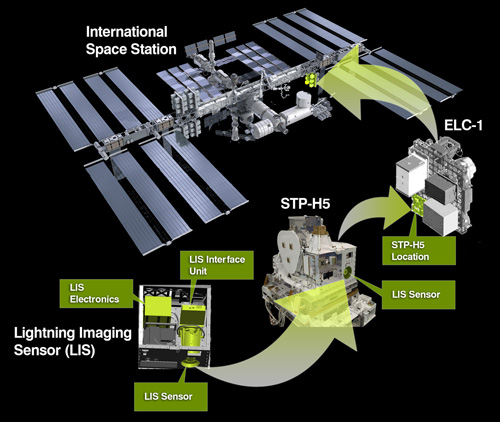 The spare LIS built for the TRMM program was carefully stored for future use and NASA found one. LIS was placed on the International Space Station in Feb 2017. LIS is mounted to the station as part of the U.S. Department of Defense (DoD) Space Test Program (STP)-H5 science and technology development payload. By placing LIS on the space station, which has a highly inclined orbit, a greater geographic range of measurements are obtained than previously measured by TRMM LIS. The ISS LIS provides total lightning measurements between +/- 55 degrees latitude which covers a geographic range that includes nearly all global lightning.
The spare LIS built for the TRMM program was carefully stored for future use and NASA found one. LIS was placed on the International Space Station in Feb 2017. LIS is mounted to the station as part of the U.S. Department of Defense (DoD) Space Test Program (STP)-H5 science and technology development payload. By placing LIS on the space station, which has a highly inclined orbit, a greater geographic range of measurements are obtained than previously measured by TRMM LIS. The ISS LIS provides total lightning measurements between +/- 55 degrees latitude which covers a geographic range that includes nearly all global lightning.
ISS LIS monitors total global lightning in both day and night and will provide important cross-sensor calibration and validation with the Geostationary Lightning Mapper and with ground-based lightning networks. ISS LIS will also supply near real-time lightning data over data-sparse regions, such as oceans, to support operational weather forecasting and warning.
Related Links
■ Non-Quality Controlled ISS LIS Provisional Browse Images
■ Order ISS LIS Data using the GHRC Search Portal
■ LIS Algorithm Theoretical Basis Document - (PDF Document)
■ International Space Station Web Page
■ Optical Transient Detector (OTD) - the mission-qualified predecessor to LIS
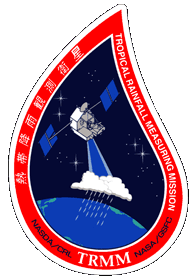 TRMM LIS
TRMM LIS
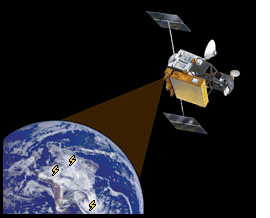 The TRMM Satellite travels a distance of 7 kilometers every second (nearly 16,000 miles per hour) as it orbits the Earth, which allowed LIS to observe a point on the Earth or a cloud for almost 90 seconds as it passed overhead. Despite the brief duration of the observation, it is long enough to estimate the flashing rate of most storms. The instrument recorded the time of occurrence, measured the radiant energy, and determined the location of lightning events within its field-of-view. The TRMM LIS detection efficiency ranges from 69% near noon to 88% at night.
The TRMM Satellite travels a distance of 7 kilometers every second (nearly 16,000 miles per hour) as it orbits the Earth, which allowed LIS to observe a point on the Earth or a cloud for almost 90 seconds as it passed overhead. Despite the brief duration of the observation, it is long enough to estimate the flashing rate of most storms. The instrument recorded the time of occurrence, measured the radiant energy, and determined the location of lightning events within its field-of-view. The TRMM LIS detection efficiency ranges from 69% near noon to 88% at night.
The TRMM satellite has a semi-equatorial orbit that is inclined 35 degrees with respect to the equator. The satellite altitude was 350 km from 1997 until 2001, at which time it was raised to 403 km. The orbit gradually declined in the last year of operation from 2014 - 2015. In 2015, TRMM was removed from orbit. The TRMM satellite orbit characteristics allowed for LIS observations in the tropical and subtropical regions of the globe between +/- 35 degrees latitude. Field-of-view and measurement spatial resolution varied slightly for each of the two orbital altitudes.
The LIS Earth Observing Satellite (EOS) Mission Objectives included Cloud Characterization, Hydrologic Cycle Studies, Storm Convection, Microphysics and Dynamics, and Seasonal and Interannual Variability of Thunderstorms. TRMM LIS contributed significantly to several of the TRMM mission objectives by providing a global lightning and thunderstorm climatology from which changes (even subtle temperature variations) were easily detected.
Related Links
■ Quality-Controlled TRMM LIS Browse Images
■ Order TRMM LIS Data using the GHRC Search Portal
■ LIS Algorithm Theoretical Basis Document - (PDF Document)
■ Optical Transient Detector (OTD) - the mission-qualified predecessor to LIS
■ Tropical Rainfall Measuring Mission Web Page
Have you used our data? Register for updates